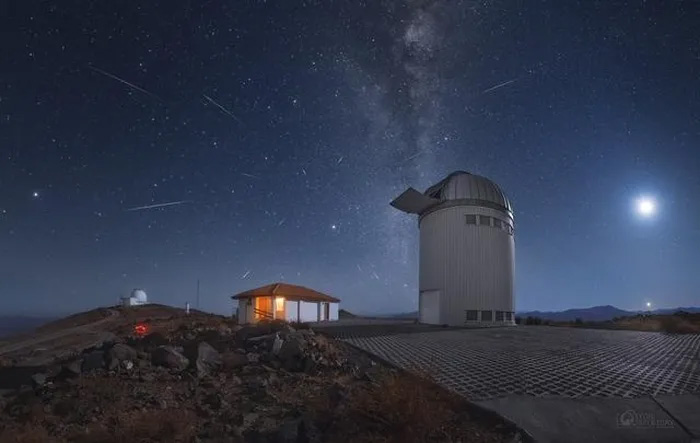An ancient meteor shower is about to shine in the sky
According to the Hanoi Astronomical Society (HAS), this April, astronomy lovers will be able to observe the new moon phenomenon, the oldest Lyrids meteor shower, the pink moon.
April 9 – New Moon
The Moon will be on the same side of the Earth as the Sun and will not be visible in the night sky. This phase occurred at 01:22 (Vietnam time). This is the best time of the month to observe faint objects such as galaxies and star clusters because there is no moonlight to obstruct them.
April 22, 23 – Lyrids meteor shower
The Lyrids meteor shower usually produces about 20 meteors per hour at its peak. The meteor shower takes place every year from April 16 to 25. This year's peak falls on the night of the 22nd to the morning of the 23rd. These meteors can sometimes create bright dust trails that last for a few seconds. But unfortunately, the full Moon's glare will obscure all but the night's brightest meteors. But if you are patient, you can still observe it with the naked eye. The best time would be after midnight. Meteorites will radiate from the constellation Lyra (Thien Cam) , and can appear anywhere in the sky.

Meteor shower lights up the April night sky.
The Lyrids are one of the oldest meteor showers that humans have observed. The oldest documents recording this phenomenon say it was observed 2,500 years ago.
We can observe this phenomenon with the naked eye and identify the constellation Lyra by finding the three brightest stars in the eastern sky. Most important are cloudless skies, little pollution, a comfortable and safe viewing position, and patience. Under ideal conditions, no more than 20 meteors can be seen per hour.
The best way to observe the Lyrids meteor shower is after midnight. Viewers can look toward the Northeast, the location of the constellation Lyra. To easily observe, viewers should lie down and look straight up and cover the vast sky.
Vehicles, street lights and high-rise buildings in urban areas will cause light pollution and obstruct visibility. Therefore, astronomy lovers need to choose an airy place, far from the city to observe meteor showers.
April 24 – Full Moon
The Moon will be on the opposite side of the Earth from the Sun, and its side will be fully illuminated. This phase occurred at 06:50 (Vietnam time). This full moon was called the Pink Moon by early Native American tribes because it marked the appearance of moss-pink phlox, or wasteland phlox, one of the first flowers of spring. This moon is also known as the Growing Grass Moon. Many coastal tribes called this the Fish Moon because this was the time when Shad fish swam upstream to reproduce.
- 4 meteor showers prove you are the luckiest
- The magic of meteor shower in ancient cultures
- Images of the most beautiful meteor shower in the past 15 years
- See the king of the upcoming meteor shower
- Choose a location to admire the most beautiful meteor shower tonight?
- Guide to observing the meteor shower of Leonids on November 17
- Eta Aquarid meteor shower peaks from today
- The first meteor shower of 2018 peaked at dawn 4/1
- Guide to photographing meteor shower phenomenon
- Watch Geminid meteor shower 2015 worldwide
- The world is about to have artificial meteor shower?
- Video: The first meteor shower scene of the year
 Van Allen's belt and evidence that the Apollo 11 mission to the Moon was myth
Van Allen's belt and evidence that the Apollo 11 mission to the Moon was myth The levels of civilization in the universe (Kardashev scale)
The levels of civilization in the universe (Kardashev scale) Today Mars, the sun and the Earth are aligned
Today Mars, the sun and the Earth are aligned The Amazon owner announced a secret plan to build a space base for thousands of people
The Amazon owner announced a secret plan to build a space base for thousands of people